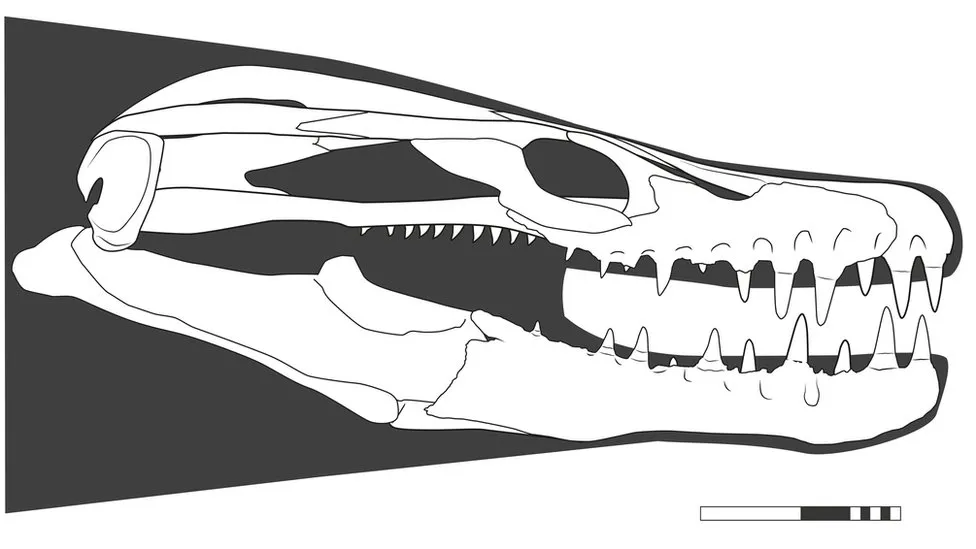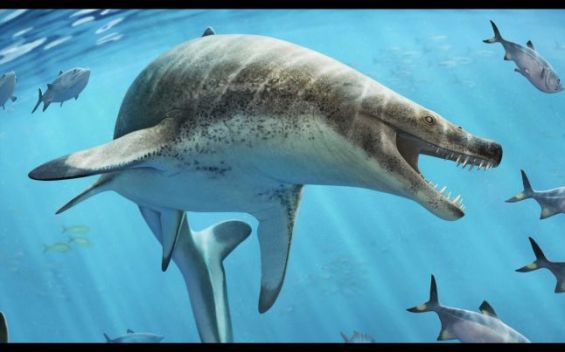In central Morocco, within a phosphate sedimentary basin, scientists discovered the fossils of a nightmarish sea lizard nicknamed «demon's face».
This giant sea lizard, named Khinjaria acuta (meaning «sharp dagger»), lived 66 million years ago during the very last bit of the Cretaceous period, right before a mass extinction event.
A study published on March 1st, led by Dr. Nick Longrich from the University of Bath, announced the discovery. Khinjaria is believed to be a strange type of mosasaur, a group of aquatic scaled reptiles from the dinosaur era.
Described as a giant lizard with «enlarged, dagger-like anterior teeth, short, robust jaws, and a long, narrow skull», Khinjaria's remains were found in the phosphates of Sidi Chennane, located in the Oulad Abdoun Basin of Morocco's Khouribga Province. The creature was as big as an orca, measuring around 8 meters long.
A top predator
Its powerful jaws suggest Khinjaria was a top predator in the Atlantic Ocean, that lived alongside other powerful beasts such as Tyrannosaurus rex and Triceratops. However, its skull differed from other predators of its time, hinting at a unique hunting strategy.

«Whether there's something about marine reptiles that caused the ecosystem to be different, or the prey, or perhaps the environment, we don't know», Dr. Longrich told the BBC. «But this was an incredibly dangerous time to be a fish, a sea turtle, or even a marine reptile».
Khinjaria is one of many predators that thrived during the final chapter of the mosasaur and dinosaur era, highlighting the rich and diverse fauna of Africa at that time.
«This is one of the most diverse marine ecosystems ever discovered», Dr. Longrich said. «It existed just before both marine reptiles and dinosaurs became extinct».
Both mosasaurs and dinosaurs disappeared towards the end of the Late Cretaceous period, around 66 million years ago.





 chargement...
chargement...













